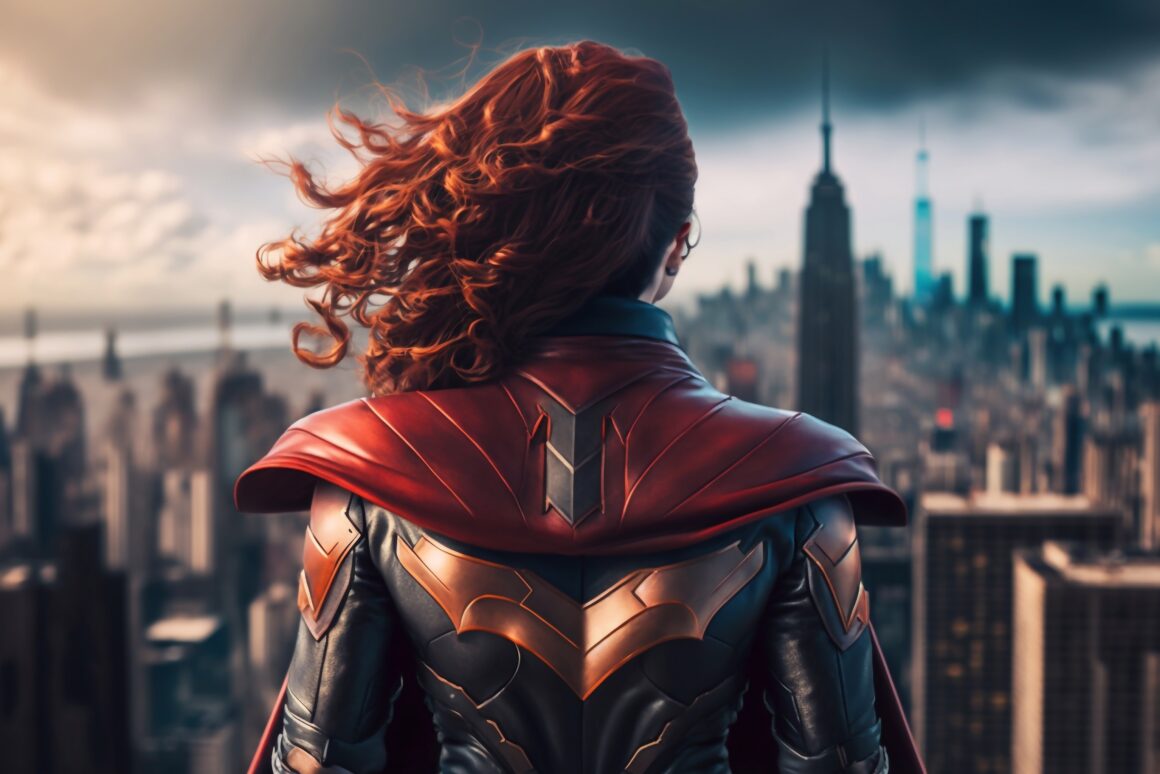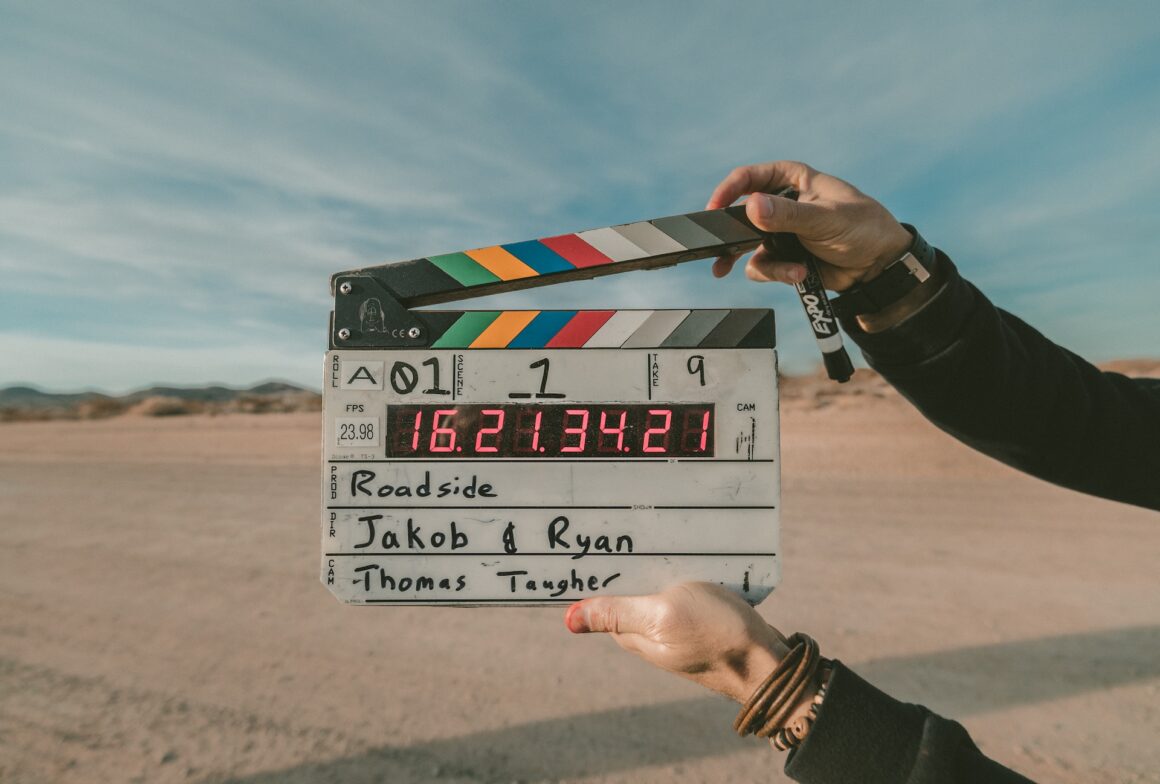Japanese cinema has a history that spans over a hundred years. As of 2010, it is the fourth largest film industry by film production. It is also the number one Asian country that won most in the Academy Awards Best Foreign film category with four awards.
With notable and legendary directors like Akira Kurosawa and Yasujirō Ozu who shaped the country’s film industry and contributed works that influenced even western cinema—it’s no doubt that Japanese cinema only continues to evolve. This list aims to celebrate contemporary Japanese directors that hone their craft and produce films that show human experience, Japanese society to the world.
Through this, I hope these talented directors would be known and their films appreciated. (And hopefully, loved—as I do.)
(Note: No way is this list exhaustive of all the contemporary Japanese directors because they are tons. I have included directors whose work I have mostly seen; hence, more familiar with, I admire and have tremendously contributed to tell narratives that are inspiring, beautiful and provoking.)

Kiyoshi Kurosawa
Kiyoshi Kurosawa is known for his contributions in the horror genre. But ironically, his films that I have watched are not from the horror genre—namely, Bright Future (2002) and Tokyo Sonata (2008) which showcases his versatility as a director as he stepped out of his horror niche. The film went on to win the Jury Prize of the Un Certain Regard section in the 2008 Cannes Film Festival.
But he first gained recognition for his 1997 film, Cure, a psychological thriller film with elements of film noir and horror. Kurosawa’s style (at least from his non-horror work) tend to focus on the natural—taking something sentimental and making it feel unsentimental but still with equal, provoking impact. In 2016, he returns to the horror genre with Creepy.
Standouts: Bright Future (2002), Tokyo Sonata (2008), Cure (1997), Seventh Code (2013), Journey to the Shore (2015)
My personal take: Kurosawa’s films that I’ve seen are two of his non-horror ones, Bright Future and Tokyo Sonata. Both of which, showcase domestic reality for young people (for the former) and for families (for the latter). Based on what I’ve seen, Kurosawa has this ability to transform human experience into something symbolic and provocative.

Shunji Iwai
Shunji Iwai started off directing TV dramas and music videos. In 1995, he went on to direct his first feature length, Love Letter. Iwai’s films often tell coming-of-age stories, adding a sense of nostalgia; hence, emitting innocence and purity reinforced by his use of sun flares and mellow colors and sometimes handheld cameras. Notable examples include his debut film, Love Letter (1995), Hana and Alice (2004) and All About Lily Chouchou (2001). But his most critically successful film is Swallowtail Butterfly (1996), shot using a handheld camera, which went on to win Best Film in the 1997 Japanese Academy Awards.
Iwai made his English film debut in 2011 for Vampire—his first horror-thriller film. Despite his notable coming-of-age films, Iwai also touches on marginalized people as seen in Picnic (1995), where he touches on the story of mentally ill patients. Iwai returned to feature length after 12 years in A Bride for Rip Van Winkle (2016), this time exploring human connection.
Standouts: Swallowtail Butterfly (1996), Picnic (1995), All About Lily Chouchou (2001), A Bride for Rip Van Winkle (2016)
My personal take: I’ve seen quite a number of Iwai’s films including Picnic, All About Lily Chouchou, Hana and Alice, Love Letter and A Bride for Rip Van Winkle. If I could describe his films in one word it would be: nostalgia. When it comes to cinematography, Iwai is my favorite. His films, mostly coming-of-age, speaks to me; hence, the nostalgia. The sun flares, the mellow colors are portrayal of innocence filled with simplicity and mostly look at the longing for human connection. It tugs at your heartstrings.

Hirokazu Koreeda
Hirokazu Koreeda is known for his films that depict family much like his predecessor and whom critics often compare him to, Yasujiro Ozu. Given his lumiere style, he is also being compared to Taiwanese directors, Hou Hsiao-hsien and Tsai Ming-liang.
But Koreeda’s style lies not only in how he explores family relationships but how he depicts such domestic realities often with a young cast. For Nobody Knows (2004), all of the child actors were unknowns. And most of the acting were done naturally, reflecting the film’s ala-documentary style. One of the actors, Yuya Yagira (12 at that time) won Best Actor at 2004 Cannes Film Festival for his role as the eldest son, Akira.
Koreeda also makes use of music as a bridge and the focus on little details that make recurring appearances with symbolic meanings. Koreeda’s other works like I Wish (2011), Like Father Like Son (2013) and Our Little Sister (2015) all explored familial themes and camera POV from the young actors.
Standouts: Still Walking (2008), Nobody Knows (2004), Like Father Like Son (2014), Our Little Sister (2015).
My personal take: When it comes to themes and cast, I have a bias for Hirokazu Koreeda’s films. I’ve seen I Wish, Like Father Like Son, Our Little Sister and Nobody Knows; all of which explores the theme of family and all of which have young actors. While Koreeda’s storylines are nothing grand—it’s the cast that flourishes. He tells the character’s story, perhaps at times, with no goal but it doesn’t put down the experience you feel as you watch two brothers separated trying to connect, two families whose children were switched at birth and a family whose parents abandoned them feel any less powerful. There is something very gentle about Koreeda’s films that in a way, makes it feel very personal to me.

Sion Sono
Sion Sono is being regarded as one of the most recognizable and celebrated Japanese directors today. His style, like Takashi Miike (below), is unconventional, provocative and subversive but at the same time, stirs discussion and receives critical acclaim. His 4-hour epic, Love Exposure (2008) is his most accomplished work, the first film in the “Hate” trilogy that is followed by Cold Fish (2010) and Guilty of Romance (2011). Love Exposure made Sono won Best Director at the 2010 Asian Film Awards.
Often, Sono’s work have elements of dark comedy and mocks a certain social problem. But at times, it can just be pure entertainment like Tokyo Tribe (2014). Throughout his career, Sono also likes recurring collaborations with actors such as with Fumi Nikaido (in Himizu, 2011 who is the first Japanese to receive the Marcello Mastroianni Award for Best New Young Actor and Actress at the 68th Venice International Film Festival, together with Shota Sometani, Why Don’t You Play in Hell, 2013) and with Denden (Be Sure to Share, 2009 and Land of Hope, 2012).
Sono’s strongest feat is his narration—combining different elements (that otherwise seem like they can’t go hand-in-hand) and make them connect with underlying symbolisms. A versatile director, his films range from musical, action, comedy to extreme sexual perversion.
Standouts: Love Exposure (2008), Himizu (2011), Why Don’t You Play in Hell (2013), Suicide Club (2001)
My personal take: When it comes to narrative and storytelling, Sion Sono is at the top of my list. There is never any underlying arch between his films except that they are depicted in the most bizarre, fun, weird or dramatic way possible. Love Exposure, the 4-hour epic, is a combination of all sorts of things that don’t usually go together, yet Sono made it happen. And well done at that. Tokyo Tribe is a mosh pit of rapping and fighting that is over-the-top but is such an entertaining watch while Himizu is dramatic and sentimental. Also, his films tend to feature talented actors and they always shine.

Takashi Miike
Takeshi Miike is no doubt, one of the most hard-working directors out there. He has over ninety works under his belt since his debut in 1999. In the years 2001-2002, he has directed over fifteen films. Miike remains as a highly controversial director given that his films’ subject are always extreme, bizarre and unconventional. One of his most famous works, Ichi the Killer (2001) which is about a sadomasochistic yakuza enforcer remains a controversial film because of the extreme violence portrayed.
Others like Visitor Q (2001) has extreme sexual perversion including incest; hence, is considered a cult film by many. To me, Miike’s films have always been either a hit-or-miss. Nevertheless, Miike’s contributions to the Japanese cinema given his wide range of films from horror, family drama and comedy has made him a very prolific and daring director.
Standouts: Ichi the Killer (2001), Visitor Q (2001), Audition (1999), Crows Zero (2007)
My personal take: Takashi Miike, to me, is a hit-and-miss director. The only film of his that I probably enjoyed is Crows Zero—because of the cast. His films are difficult to like not because they’re bad but because they’re daring. It’s either the most bizarre, the most dramatic, the most disgusting or the most thought-provoking type. It’s all in the extreme. But underneath the extremeness, his films are done with a purpose; Visitor Q is an example. It’s sickening (given the incest, necrophilia, etc.) but such a film actually is about family, shown in the most unconventional way as a sort of mockery.

Tetsuya Nakashima
Testsuya Nakashima is known for exploring characters and stories at their most extreme and lowest. The most notable example would be Confessions (2010), which was shortlisted for the Best Foreign Language Film category in the 83rd Academy Awards. But perhaps his most famous work is Kamikaze Girls (2005) for which he won Best Director at the 2005 Yokohama Film Festival. He also tends to explore the generational clash and rebellious escape of his young characters. Notably, most of his films also have females in the leading roles.
Standouts: Confessions (2010), Kamikaze Girls (2005), Memories of Matsuko (2006), The World of Kanako (2014).
My personal take: I’ve seen three of Tetsuya Nakashima’s films and I love how all of their leads are females which to me, is rare and even if done, are often portrayed in a negative way. It’s true that Nakashima explores stories and characters where they’re at their lowest. Confessions is probably the most notable example. It’s about a mother who lost her daughter, killed by one of her students. Kamikaze Girls has done this in a comical way about two outcasts are longing for escape. His films also relay heavily on colors and visuals. Confessions is dark, Kamikaze Girls uses animation and bright colors while The World of Kanako relies on fast cuts.

Isao Yukisada
Isao Yukisada’s style echoes that of Shunji Iwai’s, although it shouldn’t come as a surprise. Yukisada served as the assistant director for Iwai’s Love Letter (1995), April Story (1998) and Swallowtail Butterfly (1995). Perhaps, one of Yukisada’s most notable work is Crying Out Love in The Centre of the World (2004), based on a novel, which also launched the careers of Masami Nagasawa and Mirai Moriyama. His other recognized feature is Go (2001), also based on a novel—tells the story of a zainichi Korean.
It was one of the first films at that time to explore racial identity, especially one that challenges the Japanese identity. The film won Best Cinematography, Best Director, Best Editing, Best Lighting and Best Screenplay at the 2002 Japanese Academy Awards (and Best Supporting Actress/Newcomer of the Year/Best Actor for the film’s two main leads). And Best Film at the 2001 Hochi Film Awards (including Best Actor for Yosuke Kubozuka and Best Supporting Actress for Kou Shibasaki)and Best Director at the Blue Ribbons Awards. Like Iwai, Yukisada’s style focuses on coming-of-age, youth struggles in a way that takes it time, letting their experiences flutter through the screen. He also often adapts novels into films.
Standouts: Go (2001), Crying Out Love in the Centre of the World (2004), Into the Faraway Sky (2007), Pink and Grey (2016).
My personal take: I’ve only seen three of Isao Yukisada’s film. I loved Go and Crying Out Love in the Centre of the World very much and Five Minutes to Tomorrow, not so much. Based on the three that I’ve seen, Yukisada likes using timelines which makes sense given his films tend to explore how characters develop, their experiences as they progress and how these experiences change them or those around them. He often incorporates love and friendship in his narratives and make it the focal point that erases the struggles of his characters.

Nobuhiro Yamashita
Nobuhiro Yamashita’s career took off when his graduation film, Hazy Live (1999) won the Theatre Competition Grand Prize at the 2000 Yubari International Fantastic Film Festival. He went on to work on his next film, No One’s Ark in 2003. In the the 32nd Hochi Film Award in 2007, not one but two of his films, A Gentle Breeze in the Village and The Matsugane Potshot Affair made him won Best Director.
Yamashita’s films have no grand plot to keep it moving, instead it takes on simple narration and tell that story to us. He creates his own mood and tone—like in Linda Linda Linda (2005) and explores human experience.
Standouts: Linda Linda Linda (2005), Over the Fence (2016), A Gentle Breeze in the Village (2007), Tamako in Moratorium (2013).
My personal take: I’ve only seen one of Nobuhiro Yamashita’s film and it’s Linda Linda Linda. From what I gathered there, Yamashita relies on simplicity to portray his stories. That is why it seems like Linda Linda Linda has a very gentle touch. It’s just about a South Korean exchange student who accidentally joined a band. And the film is basically them practicing until performance day. It’s simplicity. But done in a way that makes you want to keep watching.

Yoji Yamada
Yoji Yamada is a critically acclaimed director both in his native Japan and internationally. Well-known for his Otoko wa Tsurai yo (It’s tough being a man) film series and the Samurai Trilogy. Yamada won Best Director four times at the Japanese Academy Awards for his films, The Yellow Handkerchief (1977), My Sons (1991), A Class to Remember (1993) and The Twilight Samurai (2002) which was nominated at the 76th Academy Awards for Best Foreign Film.He also won Director of the Year at the Japan Academy Awards three times. Besides, his Tora-san series and Samurai Trilogy, Yamada’s film focuses on simple rural/village life instead of contemporary/metropolitan Tokyo.
Standouts: Tora-san series and the Samurai Trilogy
My personal take: I’ve only seen one of Yoji Yamada’s film and it’s The Twilight Samurai. Guess what? I absolutely loved it. Yamada relies more on narrative than he does with cinematography and visuals; and that’s not bad. Making the Tora-san series has probably influenced this. Brought up in a rather well-off family, Yamada chooses to portray films on rural life, much like in The Twilight Samurai. And I think that’s something entirely different as well.

Shohei Imamura
Shohei Imamura, the oldest director in the list, is the only Japanese director to win two Palme d’Or awards (for The Ballad of Narayama, 1983 and The Eel, 1997). Imamura began as an assistant to legendary filmmaker, Yasujirō Ozu—beginning his film career. Takashi Miike was a student in a school that Imamura founded. Like Ozu, Imamura’s films explore Japanese society particularly on the marginalized communities and the relationship it has with the higher class, seeing himself as a cultural anthropologist.
Three films launched Imamura as one of the leading figures of the Japanese New Wave cinema. These are Pigs and Battleships (1961), The Insect Women (1963) and Unholy Desire (1964) which showed heavy anti-American messages. Because of that, the studio he was working for haulted him from making films for two years. He established in his own independent studio in 1965 (Imamura Productions) to stop further interference on his work and celebrate creative freedom.
Standouts: The Ballad of Narayama (1983), The Eel (1997), Black Rain (1985), Vengeance is Mine (1990)
My personal take: I actually have not watch any of Shohei Imamura’s films but I choose to include him in this list because of his profound contributions to Japanese cinema and I think that should be told and celebrated.
How I wish that there could have been at least one female director here. But truth be told, from the numerous Japanese films I have watched, I have yet to watch one by a female director. And that is truly such a pity.
For more detailed reviews of some of the films mentioned, have a read at my films reviews here.





Comments are closed.